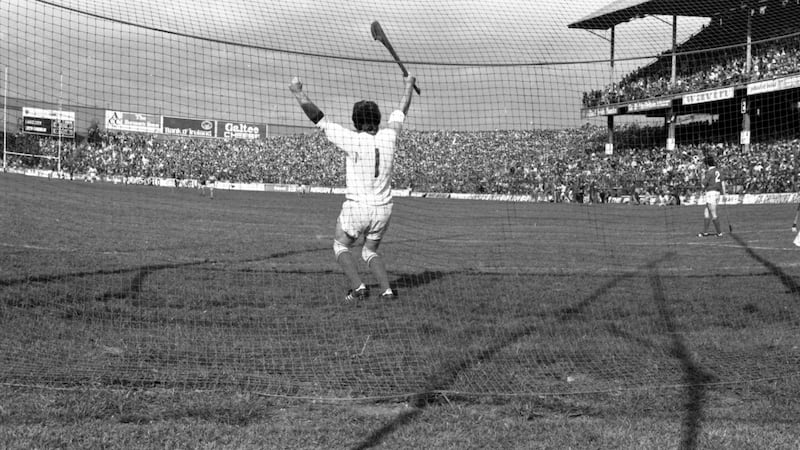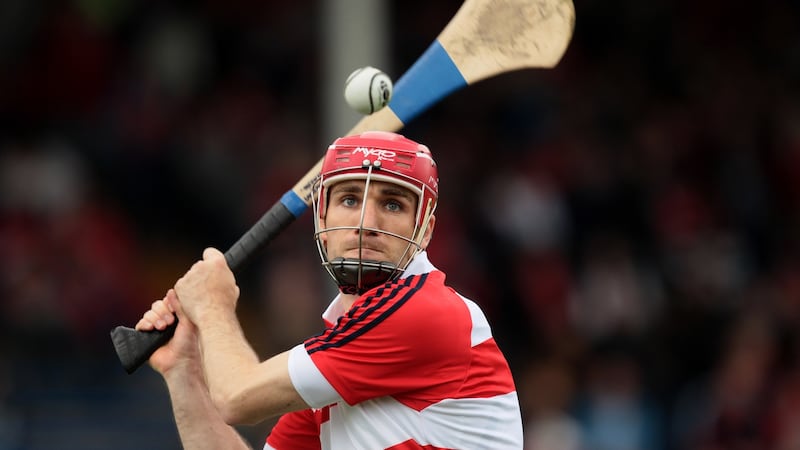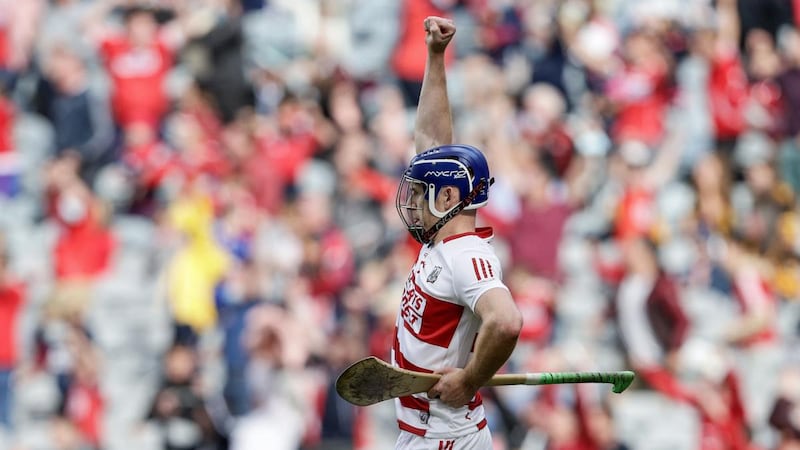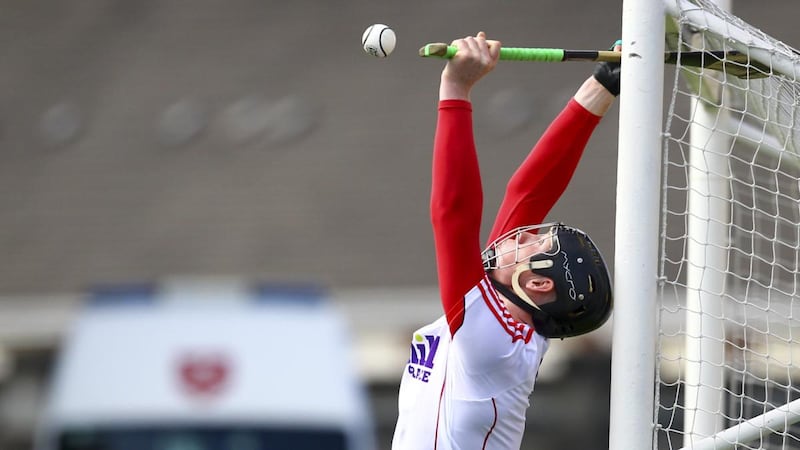Coaches at Ballinhassig GAA club were facing a predicament midway through the 1960s. They weren't the first club faced with the dilemma, and they certainly wouldn't be the last, but that's not to undermine the issue at hand. The club needed a new minor goalkeeper and there were no obvious recruits.
After surveying all their options, their eyes landed on a 14-year-old that may have lacked the experience and size of other players on the panel, but who more than made up for it in confidence and skill. So, young Martin Coleman, a handy outfield hurler within his own age group, was approached.
"If they could've got somebody else, they wouldn't have put me into goal," remembers Coleman. "I said I didn't want to go in but they told me it was the only place they had for me. I always used to play corner forward or centre forward but Jerry Murphy and my brother, John Kevin, were the mainstays of the club at that time underage and they were very shrewd men.
It's a big decision to leave an intercounty hurler on the bench to play junior hurling for the second team. There's a massive decision to be made
“They said, ‘Look, we’re stuck for a goalie but you’ll make it because you’re a good hurler. Don’t let us down’. As the man says, the rest is history. I didn’t play anywhere else after that.”
The club didn’t know it at the time but that decision would be one of the most significant moves it ever took. In a few short years, Coleman was the last man of defence for the historic three-in-a-row-winning Cork side of the mid-70s. Perhaps more significantly for his local community though, he provided the inspiration for others in the southeast Cork club and young generations in time would follow a similar path.

His son, Martin Coleman Jr, served as the able deputy for Donal Óg Cusack for years before brothers Patrick and Ger Collins, both of whom will be wearing the goalkeeper jerseys for Cork on Sunday, were eventually handed the baton. Six Ballinhassig players will have been involved in Cork squads in All-Ireland finals by this Sunday afternoon. Four of them are goalkeepers: Martin Coleman Sr, Martin Coleman Jr, Patrick Collins and Ger Collins. The other two are Seán McCarthy and Fr Con Contrell.
Having two goalkeepers from one club, never mind the one family, commanding the goalkeeper jerseys at intercounty level is a rare occurrence but it is no surprising development for those familiar with the Cork club scene, such is the tradition in Ballinhassig.
The brothers’ father, Pat, served as Coleman’s deputy through the ’70s before he eventually moved on from his apprenticeship to continue the craft. And as each decade passed, more inspiration was passed along to the next generation, young hurlers always looking up to heroes donning the jersey a different shade to every other on the pitch.
But having such a rich tradition has brought about a new predicament in complete contrast to the one the club faced seven decades ago: finding a way to cater for the two best goalkeepers in Cork as they both progress in their respective careers.
"I was involved with our top team in 2019 and we played Ger corner forward with Patrick in goal," says Victor Twohig, a club coach who has experienced the brothers' development from underage level.

“The purist would say he should probably be supporting the second team in the club but as doctors differ, patients die. It’s just an opinion. After Sunday they’ll be our players again and I’d say this year is going to be very interesting with both of them on the Cork intercounty scene.
“It’s a big decision to leave an intercounty hurler on the bench to play junior hurling for the second team. There’s a massive decision to be made. But as long as Ger is playing senior hurling with CIT though, that probably takes the edge off.”
You want about 70 per cent talent and the rest of it is guts and bravery. You wouldn't want to be easily rattled
That both players are more than capable of holding their own out the field perhaps also eases the pressure a little. For most of their underage careers, the pair played as forwards, moving up to play in goal at an older grade just as Coleman did all those years back.
But they weren’t exactly just making up the numbers further out the field either.
“I was the manager of the minors for four years but the year before that Patrick was still 17 and he went out and played a game at centre forward,” remembers Twohig. “I think he scored 2-18 or something – something outrageous.”
"But long before that when he was playing for Goggins Hill National School, you could see Patrick was a special talent. I remember his father telling me one time when Patrick was just five or six: 'See this fella here, he'd put that ball in your eye'. And he was right."

“You’d want to be a good hurler in goal because you’d want to have good control and ability,” adds Coleman. “You want about 70 per cent talent and the rest of it is guts and bravery. You wouldn’t want to be easily rattled. Most of the time you’re only a spectator in goal but the pressure is on you, especially when you’re playing intercounty. You must be as fit as the man playing centrefield. And you may not be running, but the mental strain is weighing on you.
“Patrick had that in abundance. But he was a great forward and they used to play him corner forward when Martin [Coleman Jr]was in goal. Martin was 34 or 35 and was still playing so they’d play Patrick at corner forward and he was our best forward – I thought he was one of our best forwards anyway.
“And Ger is equally as good outfield. He’d play centre forward or full forward. Both of them are just natural hurlers. They’re as good outfield as they are in goal.”
These boys work tremendously hard together. They're always hurling and always training, even when they were working with me in my engineering business
But tradition inevitably drew them back to their natural home between the posts, even if that is where the pair found most competition for themselves. They were born into the tradition, their father throwing himself in front of shots for the club before they were even born and their older brother, Matthew, playing at minor, under-21 and intermediate level for Cork before them.
Given the depth of his talent it would be no surprise to see younger brother, Ger, is still young, also compete for the No 1 berth over the coming years, both at club and intercounty level.

“There would be competitive tension there, no doubt about it,” says Twohig. “However, you would be layering huge amounts of respect on top of that competitive tension.
“If Ger is sitting on the bench and Patrick is having a blinder, Ger would be delighted. Equally, if Patrick got injured and had to come off, Ger would be delighted for the opportunity. He would be disappointed for his brother but delighted for the opportunity.
“These boys work tremendously hard together. They’re always hurling and always training, even when they were working with me in my engineering business, right down to the lengths of their breaks and the portions of food they eat, the type of ingredients they eat. They set targets and they’re achieving them. They’ve always been very determined on and off the field and a lot of people don’t see that.”
And behind it all, the inspiration they’re providing pours down to the next level. Today’s heroes are setting the template for tomorrow’s and as the next generation emerges and the current eventually moves on, it would be no surprise to see another crop of goalkeepers emerge from the rural Cork club.
Should Cork overcome the odds and triumph over Limerick on Sunday, children across the county will take to their gardens that evening to replicate their heroes. And in Ballinhassig, you can expect plenty of quarrels for the right to be in goal.











